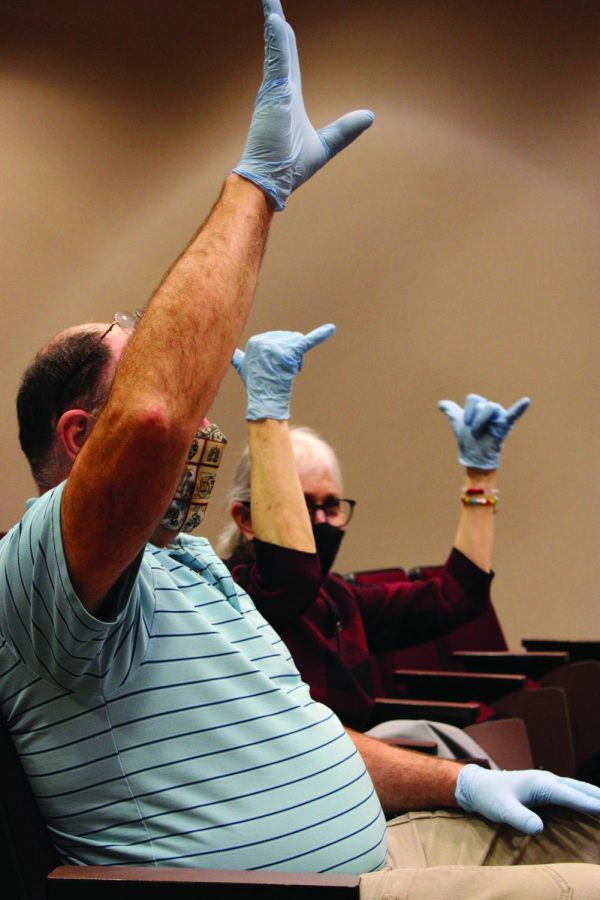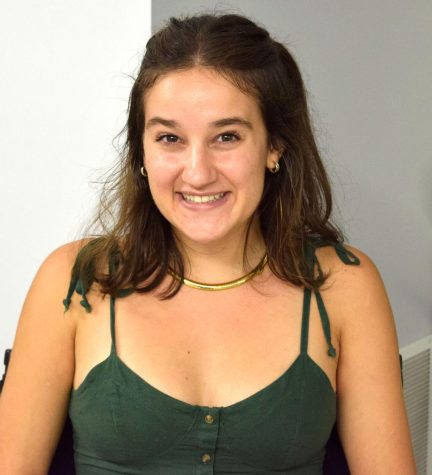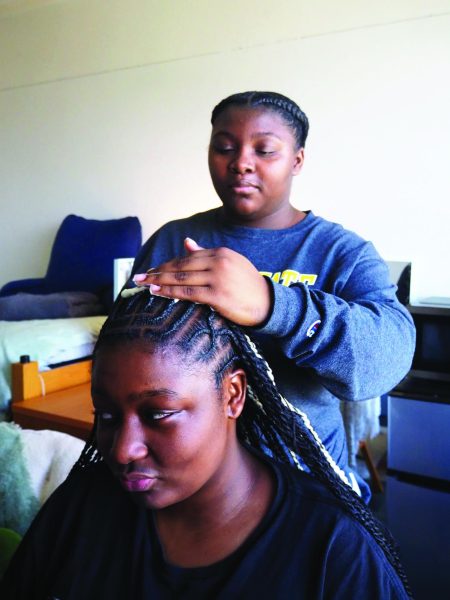Christensen provides insight on COVID-19 vaccines
Audience members particpated by demonstrating the job of B-cells.
March 3, 2021
WSC hosted a vaccine presentation given by Dr. Douglas Christensen, biology professor at Wayne State College and the chair of the Life Sciences Department, for students and staff to learn more about the different COVID-19 vaccines.
During the presentation, Christensen explained how the vaccines are made, how they enter the body, side effects and the similarities and differences of the main vaccines.
The Moderna vaccine is a two-shot vaccine with the doses administered one month apart (28 days).
According to the CDC’s website, “the Moderna vaccine was 94.1 percent effective at preventing laboratory-confirmed COVID-19 illness in people who received two doses who had no evidence of being previously infected.”
Since this is a MRNA vaccine, it works by inserting the instructions (MRNA) into our cells to make a spike protein. Spike proteins are found on the surface of the virus that causes COVID-19.
Once the cell makes this harmless protein, the body can then begin to create antibodies to build an immune response.
The Pfizer vaccine is a two shot MRNA vaccine just like Moderna, however, the two shots are administered 21 days apart.
According to the CDC’s website, “the Pfizer-BioNTech vaccine was 95 percent effective at preventing laboratory-confirmed COVID-19 illness in people without evidence of previous infection.”
The Johnson & Johnson vaccine is not an MRNA vaccine, rather it is known as an adenovirus vector vaccine.
According to an article by The Washington Post, “It uses the more established approach of employing a harmless cold virus to deliver a gene that carries the blueprint for the spiky protein found on the surface of the coronavirus. The virus enters cells, which then follow the genetic instructions to construct a replica of the coronavirus spike. The immune system uses these replicas to recognize — and respond to the real thing.”
This vaccine is about 72 percent effective in the United States.
If you are offered the Johnson & Johnson vaccine, it is recommended that you take it even though it is less effective than the other two.
“If we get a bunch of people vaccinated now, they can always get a booster or a different vaccine late,” Christensen said. “Everyone should try and get the vaccine as quickly as possible is what it comes down to.”
People across America are on the fence about whether they should get a COVID-19 vaccine or not for numerous reasons. Being educated on the matter is the first step to understanding the importance of getting vaccinated.
“Vaccines play a role in allowing us to help each other, just like traffic stops do,” Christensen said. “So, if young people ignore this because it’s inconvenient to them, it would be like ignoring stop signs, it puts everyone at risk.”
Those who are unsure about how fast the vaccine was created should remember that the best of the best was given extremely large amounts of funding in hopes of slowing the destructive path of the coronavirus.
“The process of reviewing vaccines is a very rigid process and the scientists that do this for a living have to make sure that you are safe,” Christensen said.
College students should expect to be able to get vaccinated around April of this year.











